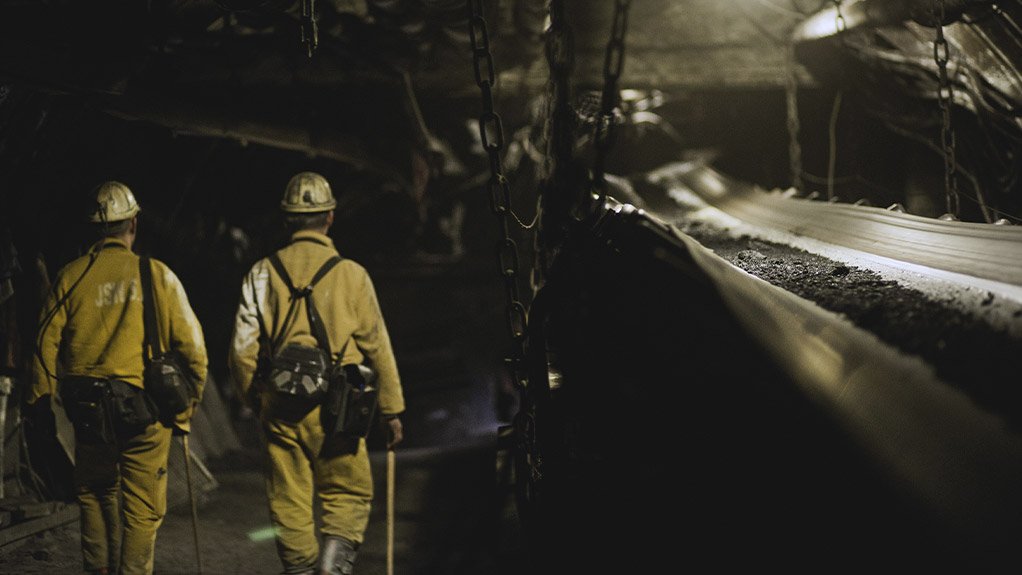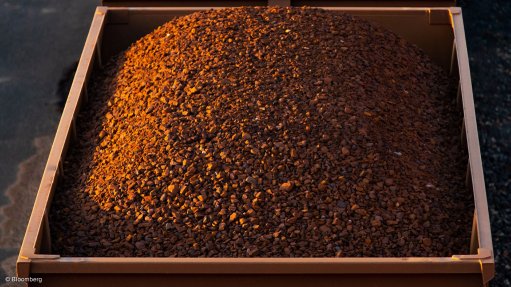Rocky political climate hinders conveyor industry growth



BUMPY RIDE The health of the local conveyor manufacturing industry directly depends on the health of the mining industry
NO NEW DAWN There have been very few new systems required in the past few years
The “turmoil” of South African politics has engendered a decline in investment currently and doubt over possible future investment in the mining industry, Conveyor Manufacturers Association of South Africa (CMASA) chairperson Jay Pillay tells Engineering News.
Typically, mine expansions, new mines and port terminal developments require large materials handling and conveyor components. The constrained economy has meant that there have been very few new systems required in the past few years, and the CMASA has seen fewer projects being awarded locally.
“In general, the life expectancy and performance of the local conveyor industry directly depend on the existence and performance of the African – primarily South African – mining industry,” he says.
Pillay explains that the ailing mining sector has caused a number of large local companies – including prominent engineering, procurement and construction management houses – to either restructure, downsize or merge, particularly those that depend on projects in Africa.
“Projects outside South Africa have become the lifeline for many players in the market. However, the stream is not adequate to comfortably sustain the South African conveyor industry. There seem to be more prefeasibility and feasibility studies doing the rounds than tenders,” Pillay claims.
The “stagnating” mining industry has caused a drop in general business confidence, which has resulted in reduced opportunities and a loss of skilled individuals to other countries through migration.
Although the mining sector is sluggish, Pillay says the challenging economic circumstances can be seen as an opportunity for manufacturers to embrace innovation.
“As the easy-to-access reserves are depleted, the mine developers and investors are forced to look at developing more remote mines, which often require innovative conveyor solutions.”
However, this requires conveyor manufacturers to remain relevant through the constant upskilling of staff, as well as the development and adoption of new technologies.
“Clients are more constrained than ever before and, in the current buyers’ market, they are squeezing conveyor suppliers, forcing the conveyor manufacturing industry to become more efficient in its delivery. It is quite an exciting time to be in the industry, with many disruptive technologies maturing to a level where the uptake is increasing daily.”
He notes that several companies have developed new, innovative solutions, particularly during the past five years.
These include rail conveyors, new suspended conveyor options, complete conveyor systems that can be relocated when required, the development of fit-for-purpose mobile machines that cater to the entry-level and midtier markets, as well as significant advances in the design and construction of a variety of components.
Although research and development (R&D) in mining is normally performed within the private sector, the CMASA has noted several companies volunteering some of their resources and facilities in collaboration with public tertiary educational institutions.
For example, the CMASA has recently been collaborating with the University of the Witwatersrand regarding R&D, and there has also been interest from the universities of Pretoria and Johannesburg.
Pillay says one of the challenges facing the conveyor manufacturing industry is how to adopt modern innovations in conveyor design and combine them with developments stemming from other industries to increase the value delivered to clients. It is especially important to leverage innovations to minimise capital expenditure, reliability and life-cycle costs.
The CMASA supports the conveyor manufacturing industry by promoting high standards in belt conveying by creating a platform for industry participants to market themselves and helping them remain up to date with the latest industry technology and skills.
Further, the association works constantly with educational institutions, such as the South African Institution of Mechanical Engineering, and the South African Institute of Materials Handling, to raise awareness among the next generation of engineers about bulk materials handling concerns.
The CMASA has historically worked closely with the South African Bureau of Standards (SABS) to promote and publish best practices for the sector. However, Pillay says SABS cooperation and interest in the conveyor industry seems to have dwindled over the years.
Global best practices in the conveyor sector focus primarily on safety and conscientiousness towards the environment.
Pillay says the conveyor manufacturing industry has a responsibility to ensure that it not only complies with legislative requirements in safety and environmental awareness but also strives to improve on it.
Meanwhile, the demand for education and training in the sector remains high, but there are limits to company spend in this regard because of declining profitability.
This decrease in skills development and training expenditure by companies has, subsequently, resulted in a notable decrease in participants attending courses offered by the CMASA.
“There is not much the industry can do to overcome some of these local challenges, except to wait for new political leadership to create a feasible environment for the mining industry to attract investors and stimulate growth,” Pillay concludes.
Article Enquiry
Email Article
Save Article
Feedback
To advertise email advertising@creamermedia.co.za or click here
Comments
Press Office
Announcements
What's On
Subscribe to improve your user experience...
Option 1 (equivalent of R125 a month):
Receive a weekly copy of Creamer Media's Engineering News & Mining Weekly magazine
(print copy for those in South Africa and e-magazine for those outside of South Africa)
Receive daily email newsletters
Access to full search results
Access archive of magazine back copies
Access to Projects in Progress
Access to ONE Research Report of your choice in PDF format
Option 2 (equivalent of R375 a month):
All benefits from Option 1
PLUS
Access to Creamer Media's Research Channel Africa for ALL Research Reports, in PDF format, on various industrial and mining sectors
including Electricity; Water; Energy Transition; Hydrogen; Roads, Rail and Ports; Coal; Gold; Platinum; Battery Metals; etc.
Already a subscriber?
Forgotten your password?
Receive weekly copy of Creamer Media's Engineering News & Mining Weekly magazine (print copy for those in South Africa and e-magazine for those outside of South Africa)
➕
Recieve daily email newsletters
➕
Access to full search results
➕
Access archive of magazine back copies
➕
Access to Projects in Progress
➕
Access to ONE Research Report of your choice in PDF format
RESEARCH CHANNEL AFRICA
R4500 (equivalent of R375 a month)
SUBSCRIBEAll benefits from Option 1
➕
Access to Creamer Media's Research Channel Africa for ALL Research Reports on various industrial and mining sectors, in PDF format, including on:
Electricity
➕
Water
➕
Energy Transition
➕
Hydrogen
➕
Roads, Rail and Ports
➕
Coal
➕
Gold
➕
Platinum
➕
Battery Metals
➕
etc.
Receive all benefits from Option 1 or Option 2 delivered to numerous people at your company
➕
Multiple User names and Passwords for simultaneous log-ins
➕
Intranet integration access to all in your organisation




















